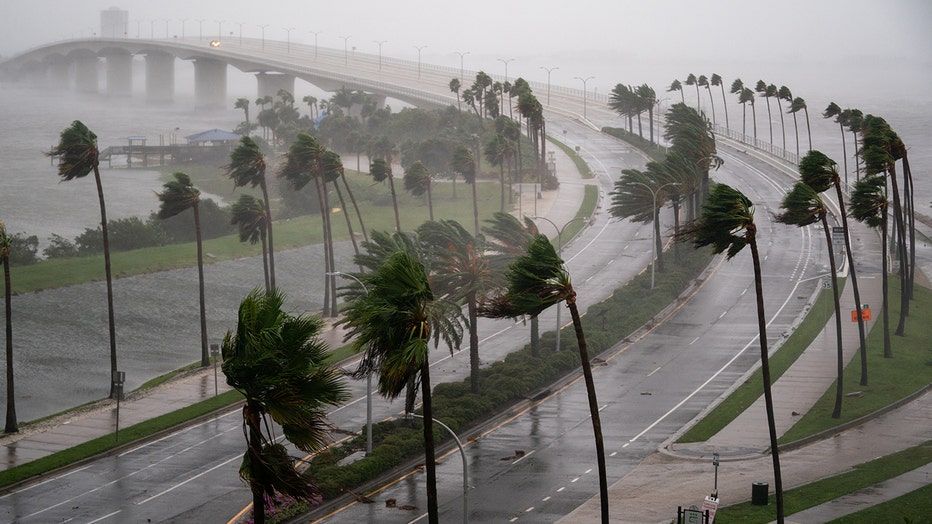Hurricane, wildfire seasons expected to lead to spike in home insurance rates
Home insurance rates are expected to continue to rise through 2024 and beyond due in part to what experts say is extreme weather in many regions of the country.
Data released by Insurify, an online insurance comparison website, showed a household’s insurance rate surged nearly 20% between 2021 and 2023, with an additional 6% expected before the year’s end.
Homeowners in Florida and Louisiana faced the highest rates in the entire country, with increases projected to be around 7% and 23%, respectively, over the next year.

Wind gusts blow across Sarasota Bay as Hurricane Ian churns to the south on September 28, 2022 in Sarasota, Florida. (Credit: Sean Rayford/Getty Images)
According to Colorado State University’s latest hurricane outlook, the states also rank in the top three of those that can be impacted by tropical cyclones during a La Niña regime.
"A ‘hurricane season from hell’ could pile crisis upon crisis," Betsy Stella, vice president of carrier management and operations at Insurify, stated. "The financial solvency of all insurance companies will be tested. Perhaps especially newer providers who have stepped into the market recently. "
OVER HALF OF AMERICAN HOMEOWNERS FEAR CLIMATE CHANGE-RELATED HAZARDS WILL IMPACT HOMES
Florida grapples with insurance crisis
Despite the Sunshine State escaping catastrophic disasters over the last several hurricane seasons, more than a dozen insurance providers have left the state, leaving homeowners to rely on state-run Citizens Property Insurance Corp.
Florida’s average rate is estimated to be around $11,000 per year, but Insurify said that could clock in closer to $12,000 if proposed rate increases are approved.
Weather extremes are not completely to blame for the crisis, according to insurance industry insiders.
Reinsurance, fraud and a housing crisis all have contributed to the lack of availability in the country’s third most populous state.
"Insurers rely on reinsurance coverage to cede some exposure to losses," Stella stated. "Reinsurance coverage has become difficult to secure in Florida, and reinsurance rates have skyrocketed. Reinsurers are subject to the same factors that impact underlying coverages: an increased number and severity of natural disasters, inflationary pressures, and labor and materials shortages."
In addition to efforts to try to attract more insurers, several governmental proposals have been floated around to try to decrease the burden on homeowners with mortgages.
Six of the ten most expensive cities for homeowners insurance are along the state’s coast, with Hialeah and Miami topping the list of communities with the highest premiums.
Hurricanes not the only known weather influence
In addition to hurricanes, the company said some hikes in insurance could be the result of wildfires in the western U.S. and tornadoes in the Plains.
California has been one of the many western states impacted by devastating wildfires, and like homeowners in many other states, has seen substantial increases in premiums.
RELATED: How to prepare for a hurricane
Where companies are no longer offering policies, the Golden State has what it calls the FAIR plan, which provides financial protection for homes and personal property.
Insurify experts said if homeowners invest in weather-resistant features around their homes, they could see some insurance discounts, but with more extreme weather impacting the country, finding the lower rates is proving to be challenging.
The lowest rates were found in Vermont, where the average annual cost for insurance was estimated to be around $918.

